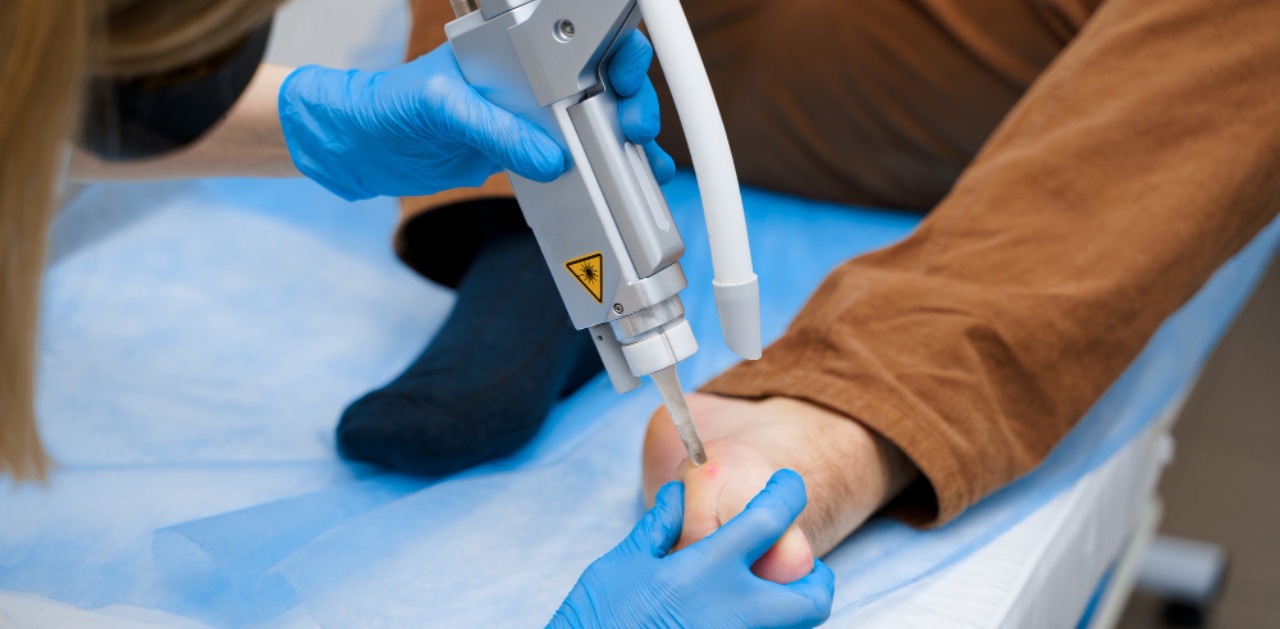Wart Removal

What are warts?
Warts are noncancerous (benign) rough textured bumps that form on the skin. A wart develops when a virus enters the skin through a cut or other break in the surface. The resulting infection causes warts to form. Children are especially prone to warts because of the minor injuries they suffer while playing. However, anyone, at any age, may get warts. The elderly and those with weakened immune systems are especially prone to developing warts. A wart may develop for up to 6 months after an injury to the skin. Warts commonly develop on the face, hands, feet, genitals, and around the finger and toenails. Warts are usually harmless and disappear on their own but people often prefer to remove them for cosmetic reasons. Besides aesthetic reasons, you should consult a doctor if:
- The warts are painful or change colour
- The pain affects normal movement and activities
- Home treatments or OTC remedies have not been effective
- You are uncertain if the growths are warts
- A large number of wars develop which may indicate a problem with your immune system
Wart diagnosis can usually be done by a physical examination but in some cases, a biopsy to ascertain the virus infection may be required.
NMC’s Cosmetology Department offers patients are a full range of wart removal treatments including surgery, laser treatments, injections, topical medication, electrosurgery (burning off the wart) and curettage (scraping off the wart with special surgical tools. When you visit NMC you will be examined by a specialist using the latest diagnostic equipment and techniques. You will then be informed about the results and the doctor will discuss wart removal options with you and ad advise you of what will be best in your case. Once the course of action is set, you will receive the best possible treatment and care that will ensure the best possible results.
Skin Tag / DPN (Dermatosis papulosa nigra)
This is a skin condition that results in small, often dark, bumps developing in the face, neck and torso. The size of the areas affected and the number of bumps varies considerably from person to person. The bumps are harmless and do not normally cause any breaks in the skin. The exact causes of DPN are still being investigated but it appears that hereditary factors may play a significant role in a person developing the condition. Sun exposure may be another causative factor. DPN is usually diagnosed by a physical examination of the affected part of the body. Because DPN does not affect health, there is no medical reason for treating the condition. However, many people opt for removal for aesthetic reasons or because of any itchiness that the bumps may cause.
DPN treatments include:- Cryotherapy – freezing off the bumps with liquid nitrogenr
- Curettage – scraping off the bumps with special surgical tools
- Using lasers to burn them off
- The use of radio frequencies that pass through the skin harmlessly but are effective in removing bumps. This method is becoming increasingly popular and is one of the most in-demand DPN treatments provided at NMC.
Mole Removal
Moles are common skin growths that almost everyone has. According to a study by the American Academy of Dermatology, most people have between 10 to 40 of these and most are often not even noticed. Moles, with the rare exception of cancerous ones, are harmless and there is no medical requirement to have them removed. However, they can affect a person’s appearance, especially if they are on the face or visible areas of the body. For this reason, wart removal is a procedure that is in high demand. Because there is always the possibility that moles may be an indicator of a more serious condition, it is advisable to have moles checked by a specialist in aesthetic medicine.
Non-cancerous mole removal can be done by various means, including:- Cryotherapy – freezing off the bumps with liquid nitrogen
- Burning them off with electric current
- Curettage – scraping off the bumps with special surgical tools
- Excision, which is an advanced form of curettage and goes deeper into the skin to remove every part of the mole, even the non-visible ones. This is typically done when a mole is suspected of being cancerous.

